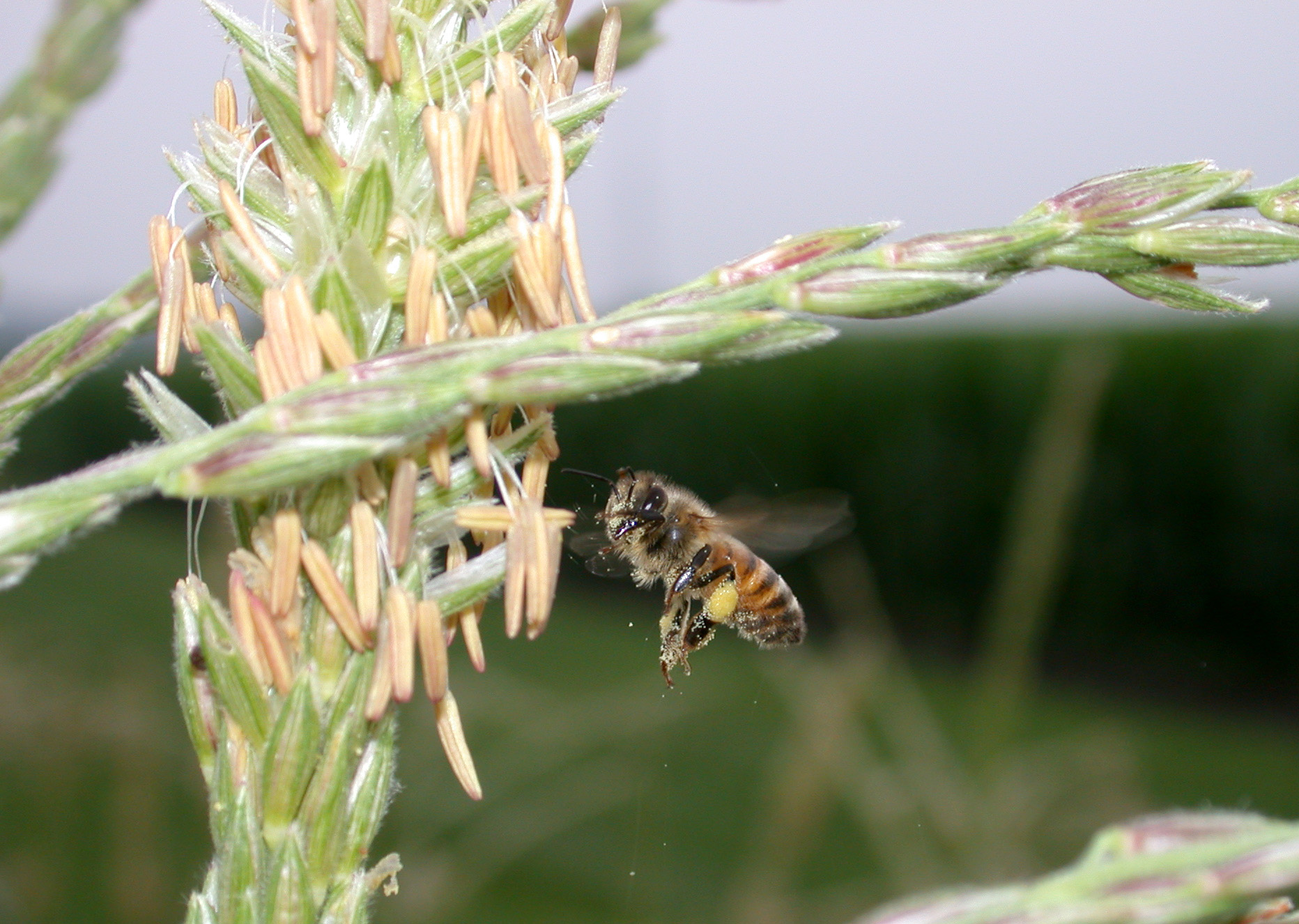Beekeeping
How to minimize pesticide risks to honey bees
Christian Krupke, Extension Entomologist
If you want to view as pdf, click here
Honey bees and wild bees are important pollinators of crops and wildflowers. Honey bees have experienced declines over the past two decades caused by a range of factors, including varroa mites, pathogens, loss of habitat and pesticide exposure. This fact sheet is designed to provide information to help avoid bee kills and sublethal effects of pesticides.
Bees are very sensitive to pesticides and are particularly vulnerable when foraging because they can contact pesticides on flowers located in or near areas of pesticide application.
It is a label violation to apply pesticides toxic to bees when bees are foraging on the crop.
Honey bees will forage only during the day and forage more on sunny days than cloudy days.
Applying pesticides in the evening will reduce impact on honey bees, provided the pesticide used has a lower residual activity the next day (this is typically the case).
When bees are used to pollinate a crop, there should be a plan agreed upon between the grower and the beekeeper to minimize pesticide damage.
Cucurbit pollination: Crops like melons, cucumbers, squash and pumpkins have flowers that are only open for one day, but new flowers are produced daily so bees are needed for extended periods. Applying insecticides after the flowers close for the day will reduce the impact on bees. However, many systemic insecticides can have a long-term impact on bee health, especially when present in pollen stored in the comb.
It is important to use application practices that minimize pesticide drift.
It is important to be aware of beehive locations before applying pesticides. Some locations of beehives can be found at Driftwatch <http://www.fieldwatch.com>
Genetically-modified, or GM, crops have not been linked to bee mortality or sublethal harmful effects across a multitude of peer-reviewed scientific studies, dating back to their introduction in the 1990’s. The proteins and compounds produced by Bt crops and herbicide-tolerant crops (such as the vast majority of corn and soybeans grown in North America) are relatively pest-specific, and are non-toxic to bees.
Be aware of the toxicity of the pesticide you are applying and the residual activity. Dusts are more hazardous than liquids to bees and should be avoided if possible. More information on pesticide toxicity and effects on bees can be found in Protecting Bees from Pesticides <http://extension.entm.purdue.edu/publications/E-53.pdf>.
Honey bee flying in corn anthers. (Photo Credit: John Obermeyer)
READ AND FOLLOW ALL LABEL INSTRUCTIONS. THIS INCLUDES DIRECTIONS FOR USE, PRECAUTIONARY STATEMENTS (HAZARDS TO HUMANS, DOMESTIC ANIMALS, AND ENDANGERED SPECIES), ENVIRONMENTAL HAZARDS, RATES OF APPLICATION, NUMBER OF APPLICATIONS, REENTRY INTERVALS, HARVEST RESTRICTIONS, STORAGE AND DISPOSAL, AND ANY SPECIFIC WARNINGS AND/OR PRECAUTIONS FOR SAFE HANDLING OF THE PESTICIDE.
June 2018

It is the policy of the Purdue University Cooperative Extension Service that all persons have equal opportunity and access to its educational programs, services, activities, and facilities without regard to race, religion, color, sex, age, national origin or ancestry, marital status, parental status, sexual orientation, disability or status as a veteran. Purdue University is an Affirmative Action institution. This material may be available in alternative formats.
This work is supported in part by Extension Implementation Grant 2017-70006-27140/ IND011460G4-1013877 from the USDA National Institute of Food and Agriculture.
1-888-EXT-INFO
www.extension.purdue.edu
Order or download materials from www.edustore.purdue.edu



